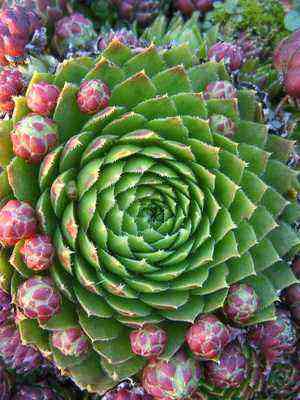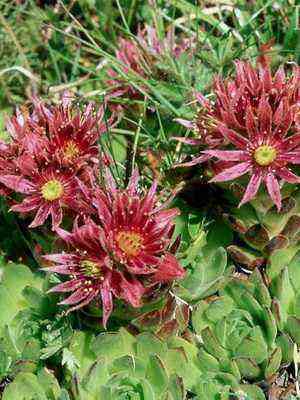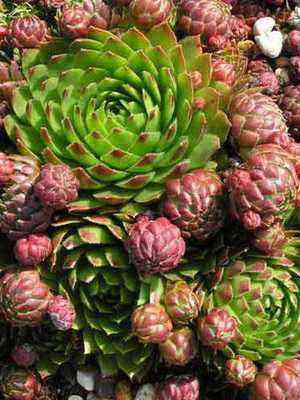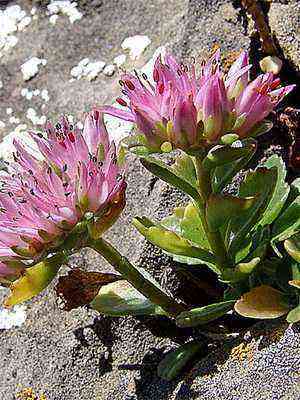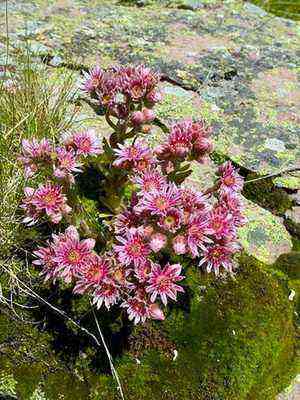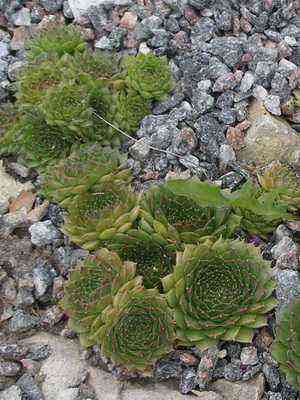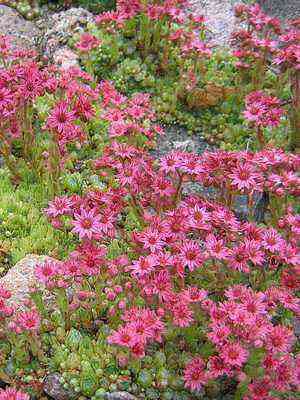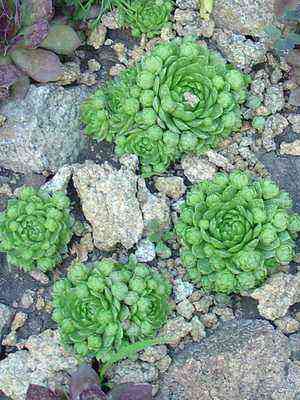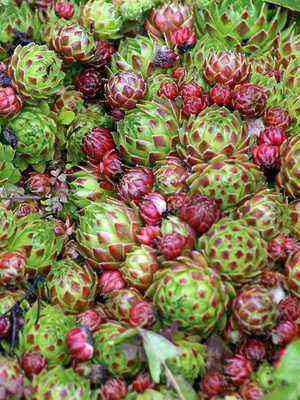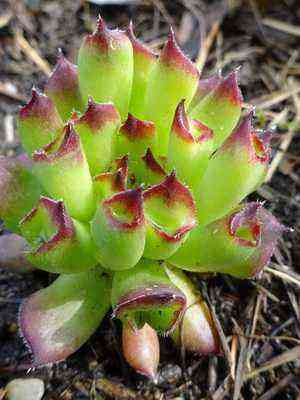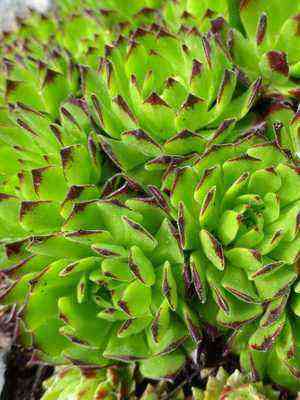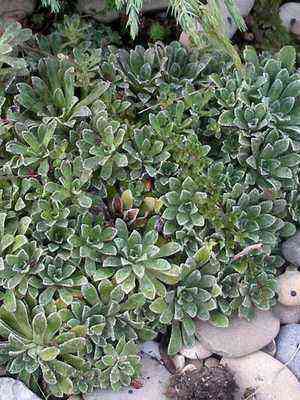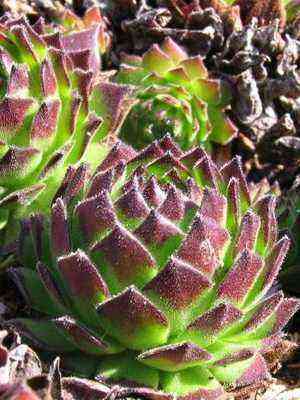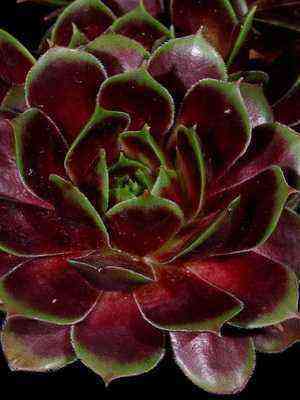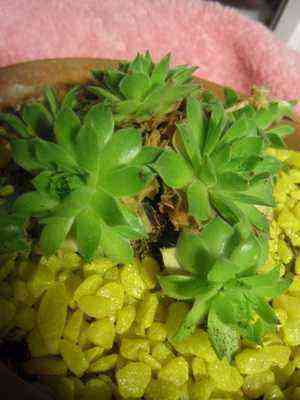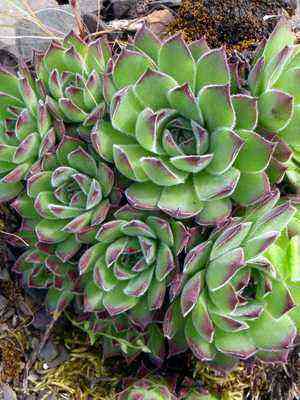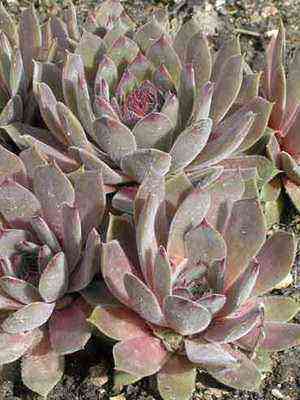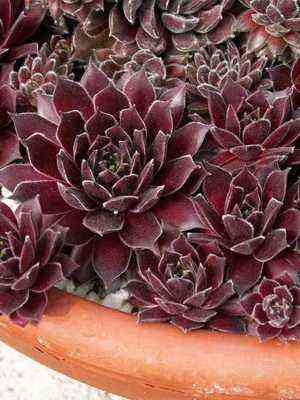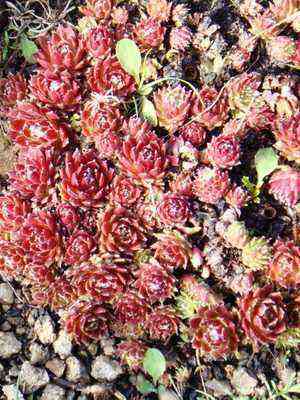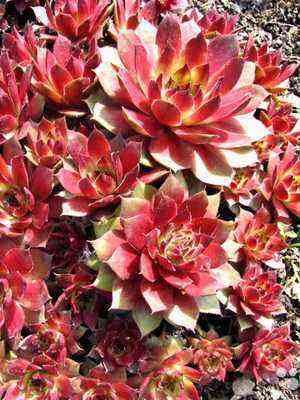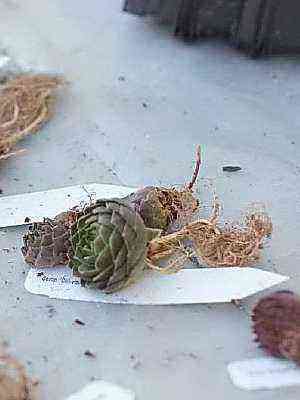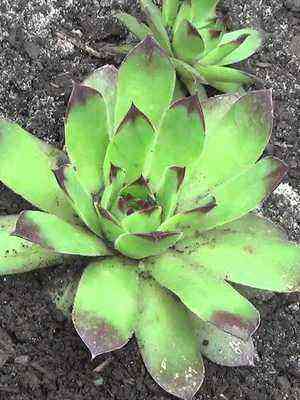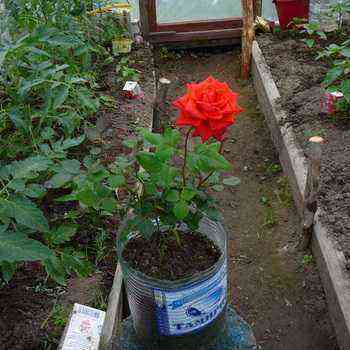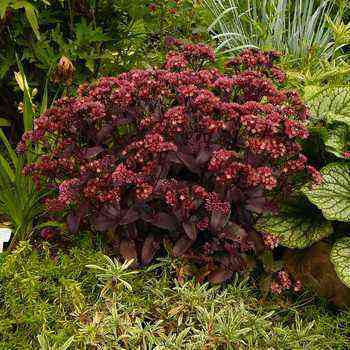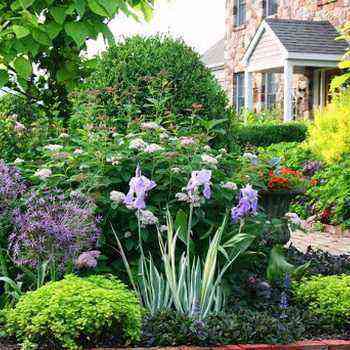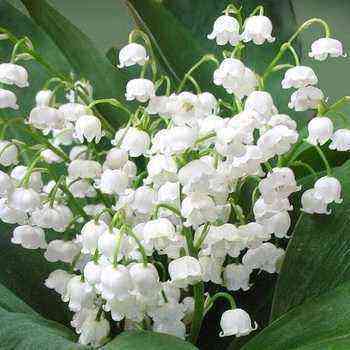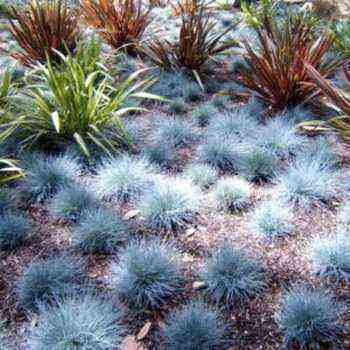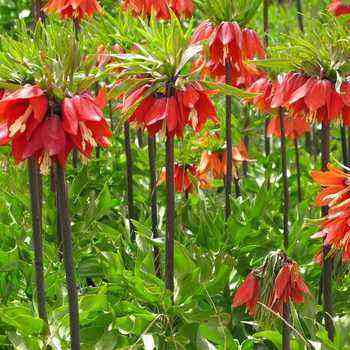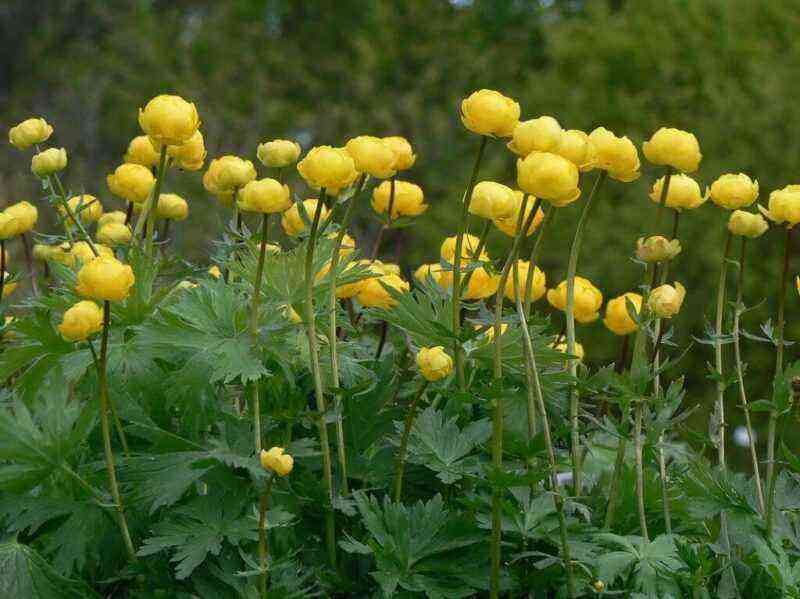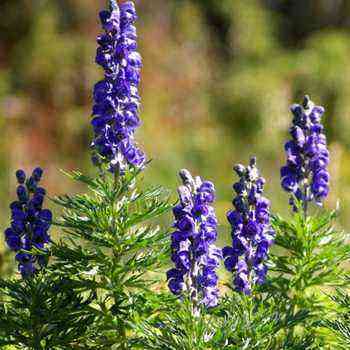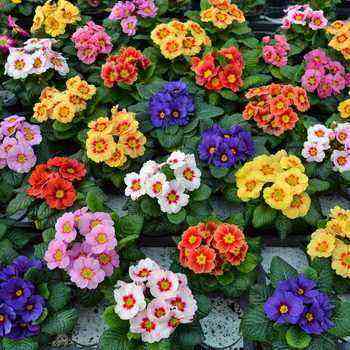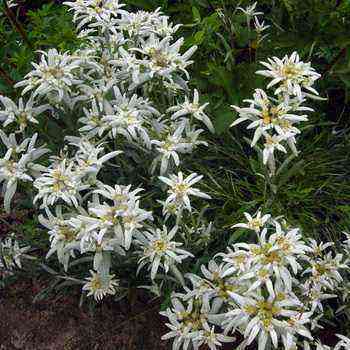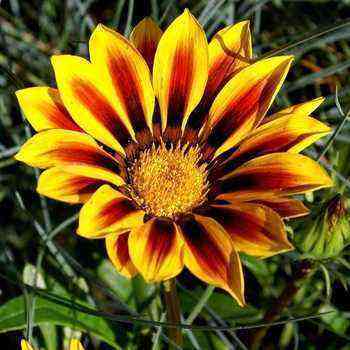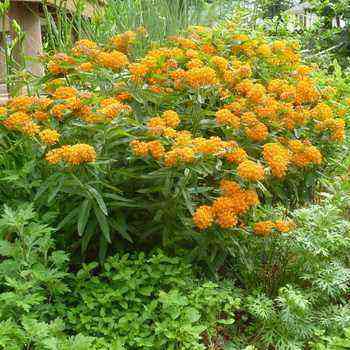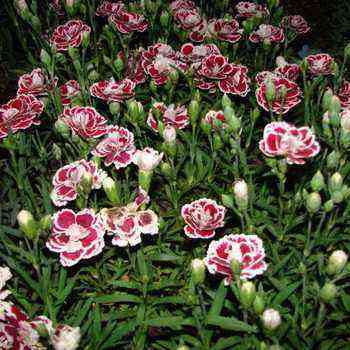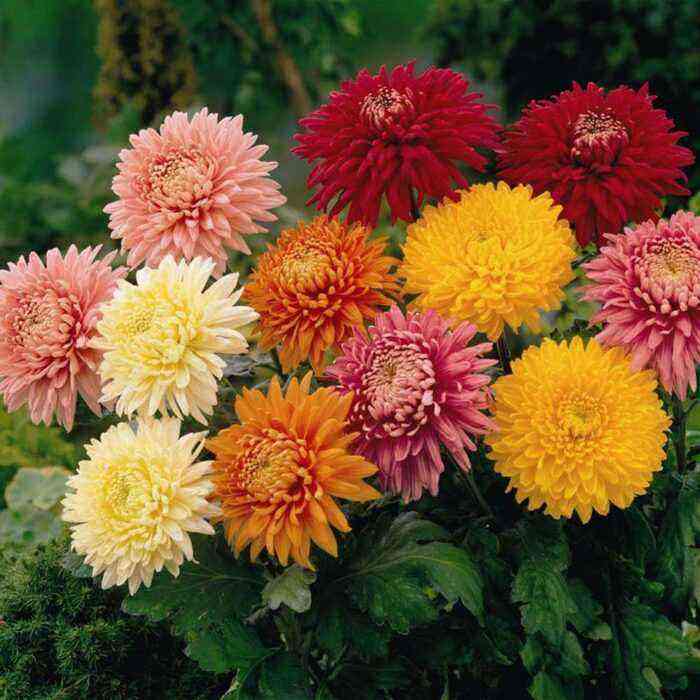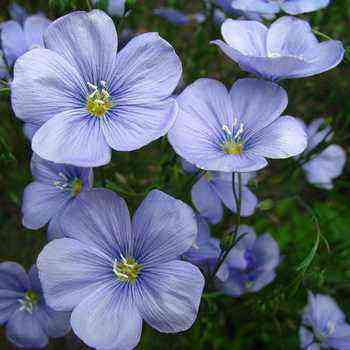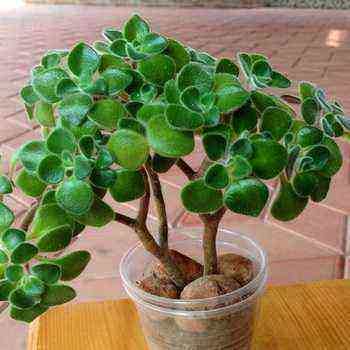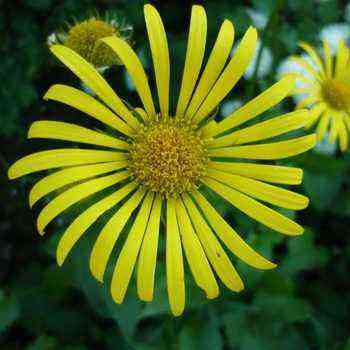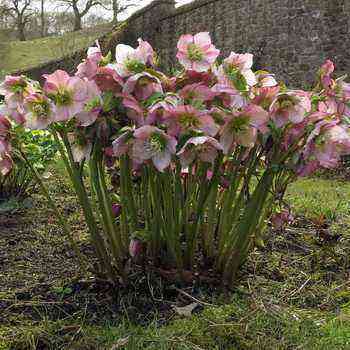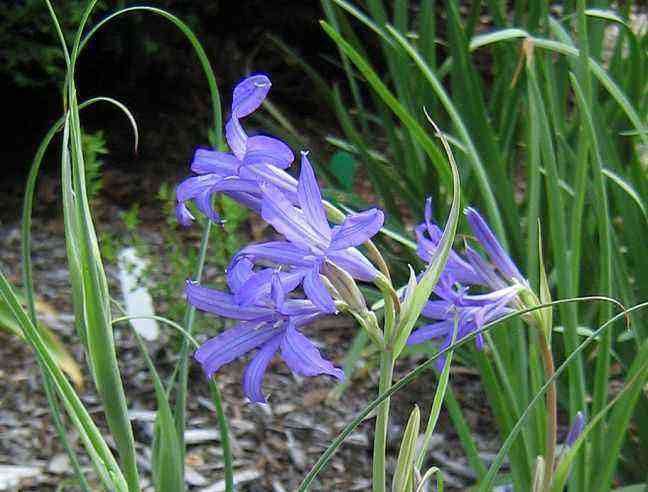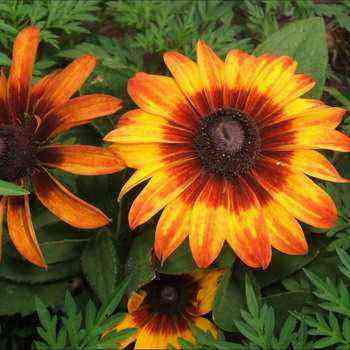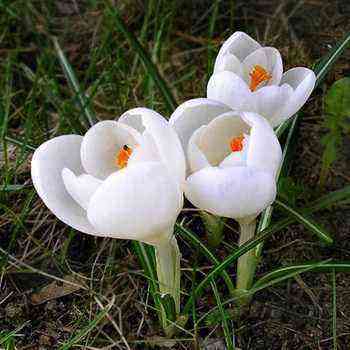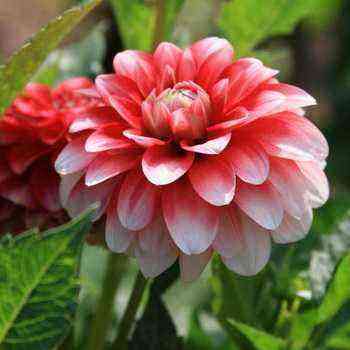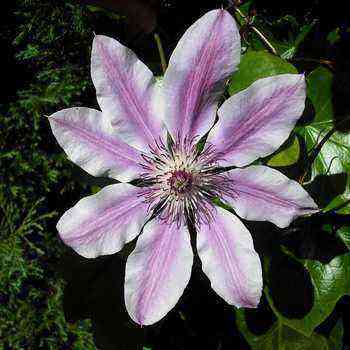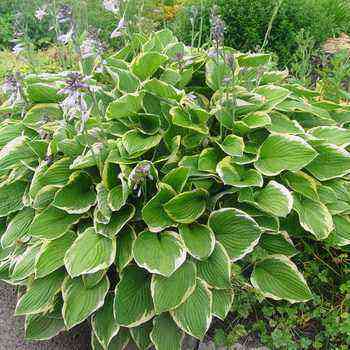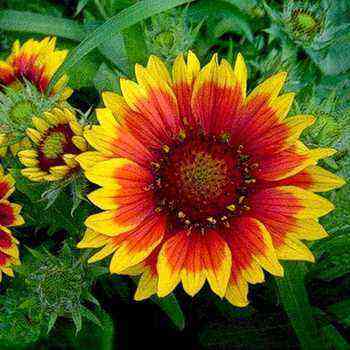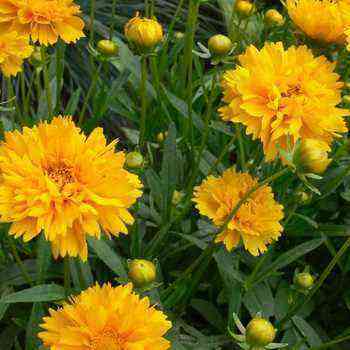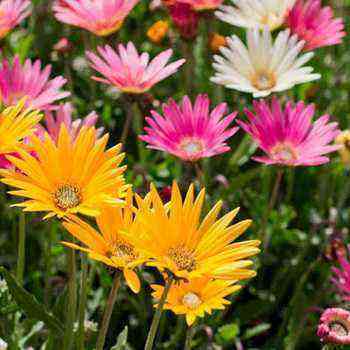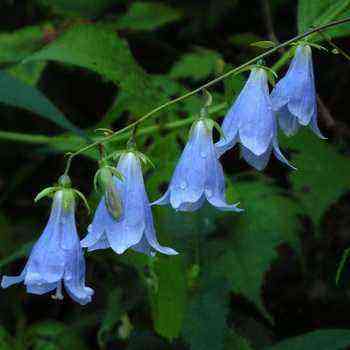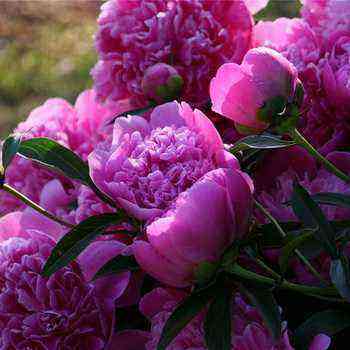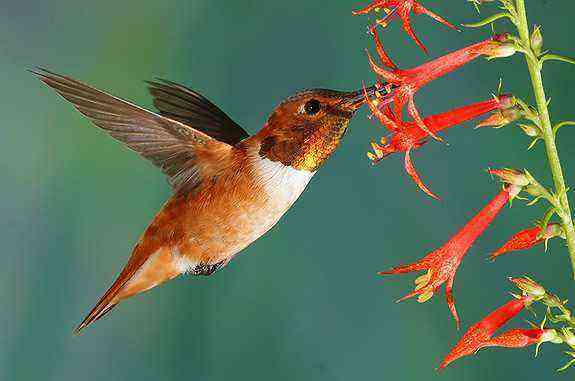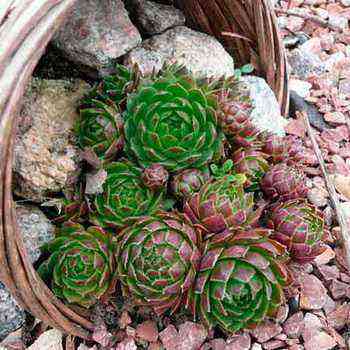
Description of the plant rejuvenated
These are perennial plants of the jungle family. The description of the juvenile fully corresponds to the name of the family: this flower has thickened, succulent shoots and leaves that distinguish them from many other species. It is this quality that gives the young a pretty appearance, makes it a desirable ornamental plant. By the way, in this capacity, rejuvenation is often called a “stone rose”.
Indeed, the appearance of the plant has something in common with a double rose bud growing directly from the ground. The difference is that the rose petals are green and unusually fleshy.
As you can see in the photo, the flowers rejuvenated, overlapping each other, form dense communities of tens and hundreds of nearby growing plants:
Leaves forming a rosette, succulent, elongated, with a sharp end, sometimes ciliate along the edge. The color and shape of the leaves is the only thing that distinguishes plants of different species and varieties. The flowers of the young are pink, white, yellowish, star-shaped, collected in corymbose inflorescences on single shoots 15-20 cm high. The short-term flowering of the young seems inconspicuous in comparison with the beauty of its leaf rosettes.
The young are propagated exclusively by daughter rosettes emerging from the axils of leaves and ground stolons.
In culture, they are extremely unpretentious, they grow well even on dry, sandy substrates, but they reach the best development on humus light loams, they do not tolerate wet soils. Sun-loving, drought-resistant. Do not need watering at all.
In the middle lane, most species and varieties are quite winter-hardy rejuvenated. Only in extreme, snowless winters is it recommended to cover the plants with spruce branches or leaves that have fallen from trees.
The root system is superficial, poorly developed. The plant realizes its resistance due to the leaves, which accumulate water and starch, and not the roots. The seeds are very small.
Species, varieties and hybrid rejuvenated
Quite numerous species of this plant are known:
Rejuvenated roofing – leaf rosettes are flat, low – up to 5-7 cm in diameter. They are bright green, with cilia along the edge, oblong, obovate and pointed at the apex. The leaves may turn red when the light regime is changed, but the base always remains whitish. The flowers are dark or light purple, greenish along the veins, star-shaped. Inflorescences are multi-flowered, wide, corymbose. Flowering shoots up to 40-60 cm in height. They bear sharp lanceolate leaves. Bloom from July to September.
Rejuvenated Caucasian – the leaves of the rosettes are sharp, oblong. Their rosette is small, only 3-5 cm in diameter. Flowering shoots up to 20 cm in height. The flowers are purple, sometimes purple-purple. In this species, many-flowered, wide, corymbose inflorescences were young. Blossoming in July-August.
Rejuvenated undersized – rosettes of leaves are even smaller than in previous species – only 1,5-2 cm in diameter. Leaves are short-pointed, bright green, ciliate. The flowers are chalky purple with a dark stripe in the middle of the petals. The inflorescences consist of 2-8 flowers. Flowering shoots up to 25 cm in height, they suddenly rise above the small balls of rosettes. Blooms in July and August.
Look at the photo of young species spherical, Russian, offspring, cobweb, they all differ in the size of the rosettes and the shape of the leaves, the color of the inflorescences and the height:
This culture has many varieties and hybrids known:
“Pharaoh” – plant height 0,1 m, leaves are dark purple with a green bloom.
“A princess” – very dense small bright green balls with a chocolate coating.
“Montana” – large dark green rosettes with a purple bloom.
Green King – the shape is the same as that of the Pharaoh variety, but the color is bright green.
“Yuliya” – large rosettes of marsh-green color, by autumn the edges of the leaves turn red.
“Red” – the variety has small dense rosettes that are almost completely red.
Pay attention to the photo – all varieties of juveniles are used for planting in small groups on the south side of evergreen, but not large shrubs, for example Mahonia:
In early spring, such a group presents a bright green spot amidst a gray leafless landscape. Spectacular plants along the edges of the paths as a border.
Rejuvenated – an indispensable component when creating groups of flower perennials, especially evergreens – spergula, saxifrage, sedum.
In carpet beds, this plant is also indispensable, as in alpine hills or on rocky areas.
Planting, care and reproduction rejuvenated
All types of this plant are widely used in ornamental gardening, as they are original and unpretentious.
When caring for young plants, open sunny places are chosen for the plant. They can withstand light partial shade, but at the same time they lose the brightness of leaves and flowers.
Soils – any, but, of course, cultivated, meaning their digging, cutting, loosening. Swampy, lowland, flooded with water are not suitable, since the root system of plants is superficial and weak. In the lowlands, rejuvenated easily rots over the winter.
As a rule, plants do not need pre-planting fertilization.
It is not for nothing that the people call the youth a tenacious one. Transplanted at any time during the growing season, they take root with surprising ease. Of course, there are limits – this is no further than mid-September and in the spring – only from mid-April.
When breeding, young rosettes with roots and without roots are planted without hesitation. Roots are formed very quickly. The distance between the plants is 10 cm. And by the next season, a whole colony of new ones, different in size, is formed around the planted rosette.
For root formation, the soil must be moist for at least a week after planting, so moderate watering is necessary during this period.
Caring for a young flower is the timely removal of weeds; no feeding, no loosening is needed, that’s why they are tenacious.
The old rosette can become a source of rotting of healthy leaves of the daughter rosette next year.
